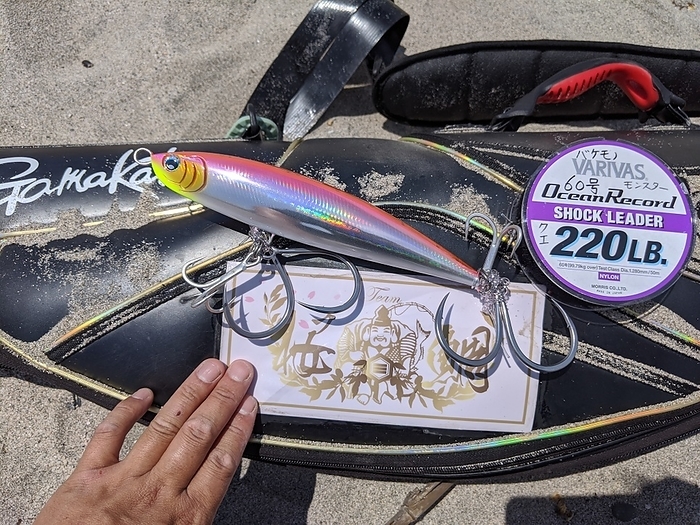
ED
Tuna caught on a sandy beach at the mouth of the Sada River, Yonago City, Tottori Prefecture
From the photographer
Taken at the mouth of the Yodoe Sada River, Yonago City, Tottori Prefecture.
217 cm, 145 kg [after bleeding] extra large bluefin tuna caught from the beach!
There are many more pictures, videos, and disassembly scenes!
Additional information
On our way to kiss fishing, we came across a tuna swimming in the shallows. He took out his kue fishing gear, which was still in the car from the day before, and after adding a hook to a lure, he started fishing for tuna. After many setbacks and hook replacements, it was dark when we finally pulled the tuna up on the beach. Although he had been there for about eight hours, it took about two hours from the time he actually hooked the tuna to the time he brought it back to the beach. After the tuna was hooked, a report was filed with the Fisheries Agency.
The tuna was caught largely because of the conditions. The location where the tuna were caught is shallow, making it difficult for large tuna to move around, and the tetrapods surrounding the shoreline make the entrance to the open sea narrow. Because of these favorable conditions, the tuna did not escape into the open sea, and they were able to try again and again.
He used the same tackle he uses for Kue fishing. He usually catches a Kue fish weighing about 40 kg with this tackle as well. He tuned up his lure by adding a hook, but the scales like steel plates of tuna stretched his hook, and he had to replace it many times.
Details
ID
166477303
Collection
License type
Editorial
Photographer
Restrictions
Authorization requested before purchase
Creation date
05-08-2021
Contact Aflo for all commercial uses.

More
Top Categories
